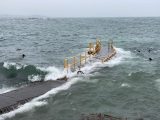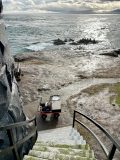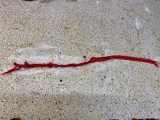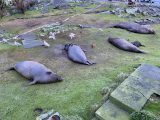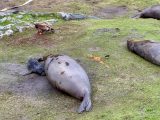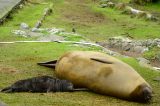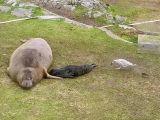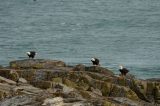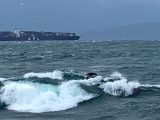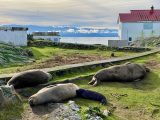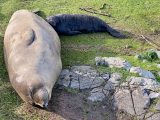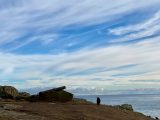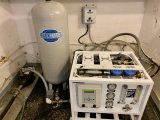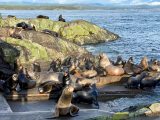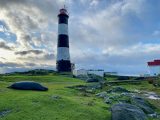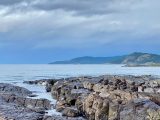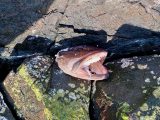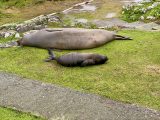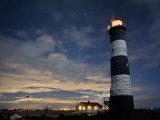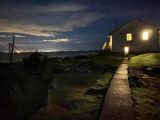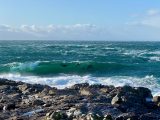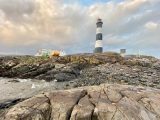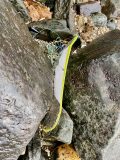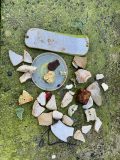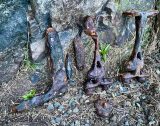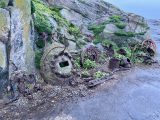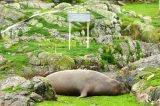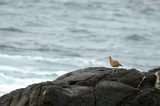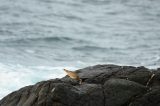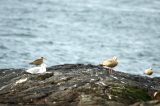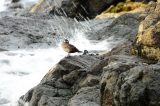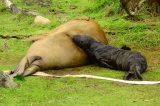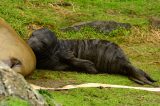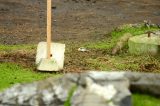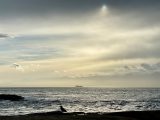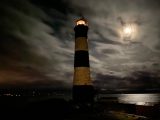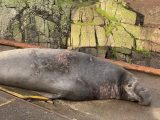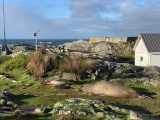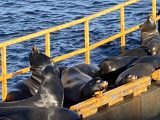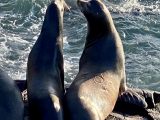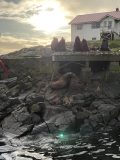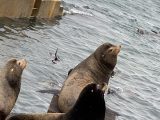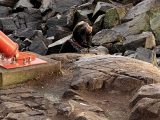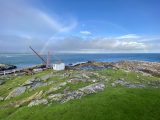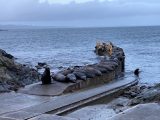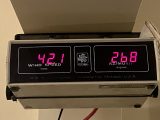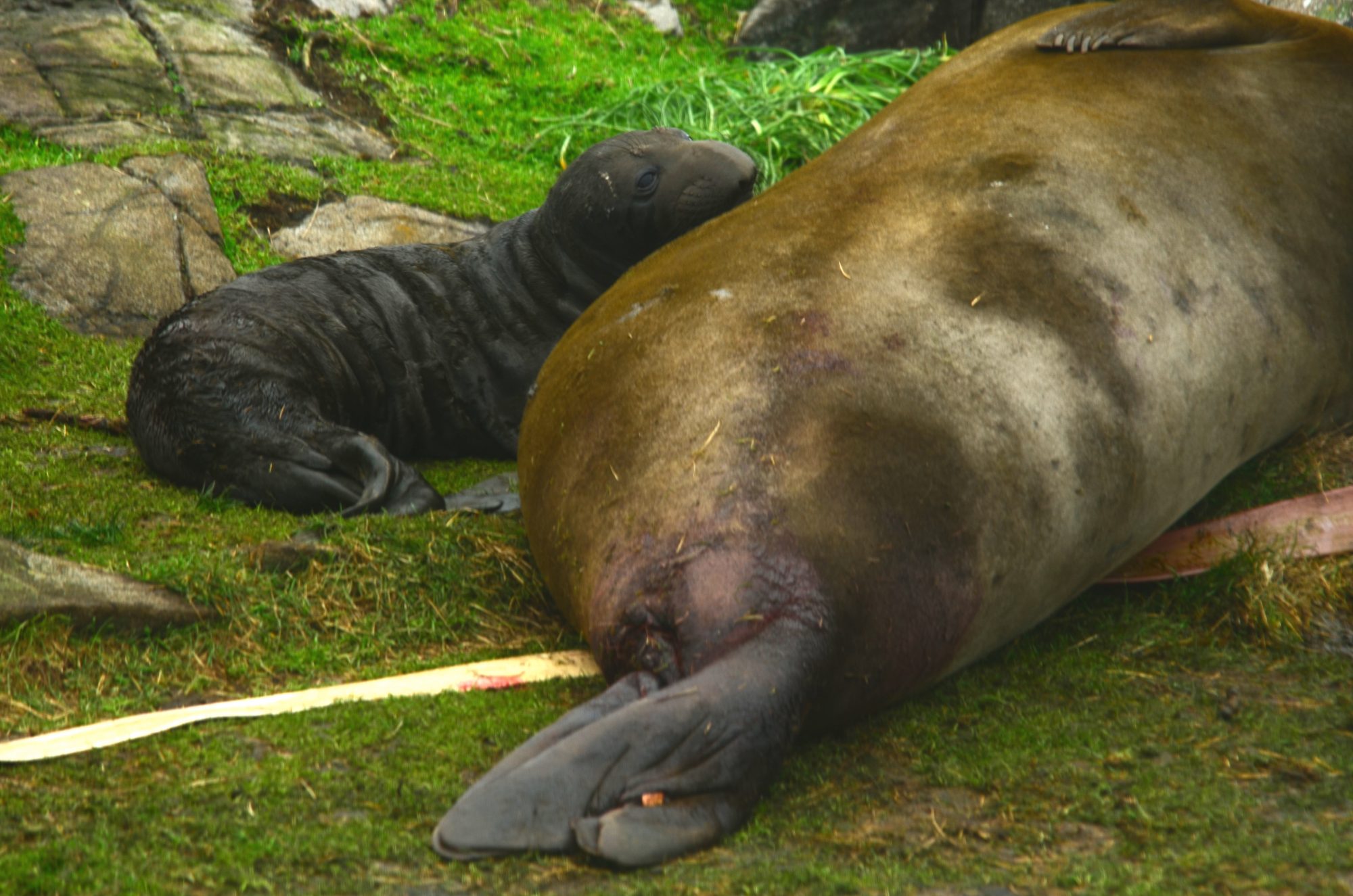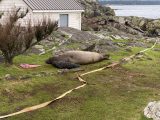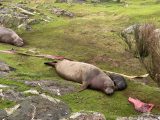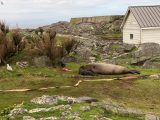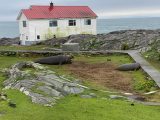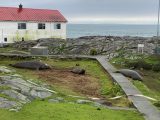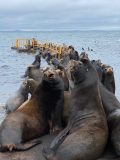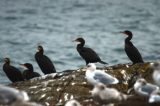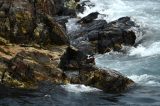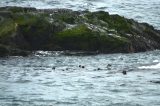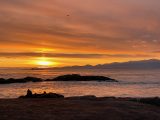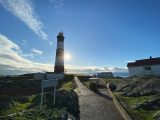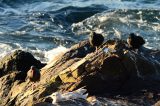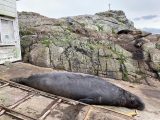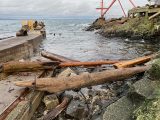Wind: yesterday 2-19 knots NE, today 1-46 knots NE shifting to W
Sea State: yesterday 3 m waves from NE, today 2 m waves from W
Visibility: 10 NM
Sky: both days overcast with patches of sun and rain
Temperature: 6-8 °C
Atmospheric CO2: 413.54 ppm (recorded by NOAA at Mauna Loa Observatory, Hawaii)
Yesterday morning in the rain, I started pressure washing the slime covered stairs up to the door of the lighthouse. They were getting a bit treacherous on a wet and windy day. A second tank of water later, it was sunny and the 18 stairs as well as entryway were clean.
The past two nights have been louder than usual, with the elephant seal bellows and barks dominating the soundscape of waves, wind and sea lion barks. I was surprised to not see a new pup yesterday morning, after all the carrying on outside my windows all night. This morning, the light brought a delightful sight of a new pup. Once again, the eagles, black turnstones and gulls all made quick work of getting rid of the placenta and umbilical cord. The new mother had arrived at Race Rocks on January 3. The other pup looks huge compared the new pup. It’s amazing how much weight the older pup has gained in two weeks. The three females appeared to be at odds with each other for most of the day, with lots of bellowing and chomping. If the remaining pregnant female sticks to the pattern, she should give birth on Tuesday, which is nine days after she arrived on the island.
See the photos and videos below for some sights and sounds of the past two days.
- The jetty was swamped for most of yesterday with the northeast swell.
- With the desalinator producing more fresh water, the pressure washer is used to get rid of the slippery algae on the outside stairs to the lighthouse. I did the first five and half steps before I realized it was easier to go from the top down.
- The other day I found this red strip of fabric near the south side of the house. It took me a moment to figure out it was the edge of the flag that had been knotted twice, torn off the rest of the flag and blown half way across the island in the strong winds. I brought it inside to the old frayed flag, which I need to dispose of in a dignified way.
- A new morning brings a new elephant seal pup. This photo was taken from my kitchen window.
- A juvenile bald eagle eats the placenta.
- The elephant seal new mother and her pup
- A gull and black turnstone help remove the umbilical cord from the pup.
- Three bald eagles lean into the wind on the northeast edge of the island.
Video from yesterday afternoon of a chorus of elephant seal bellowing:
Video of the new pup inching towards its mother:
